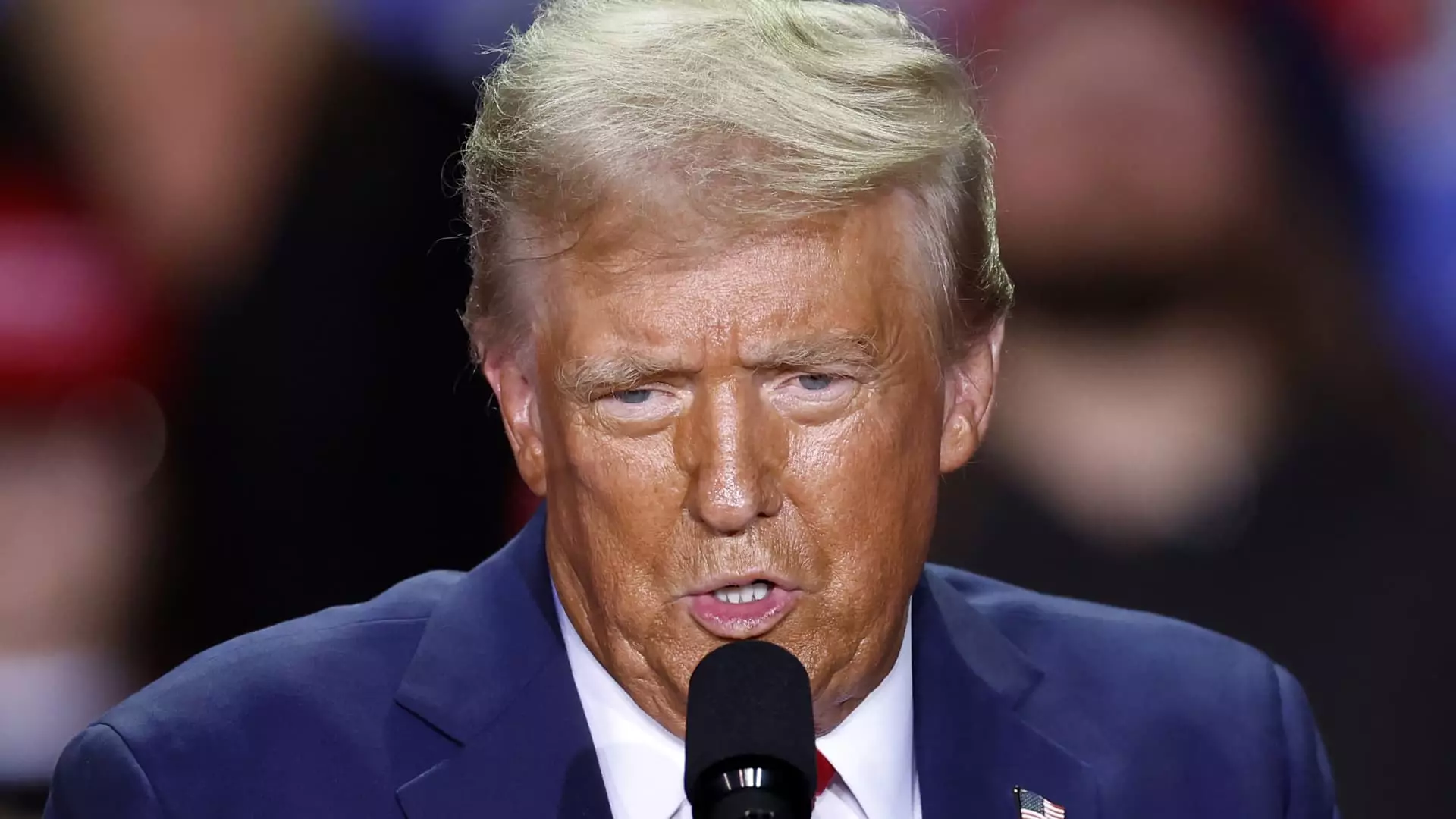On Election Day, the financial world was abuzz with activity surrounding Trump Media & Technology Group, as shares in the company surged in response to ongoing electoral updates. After-hours trading saw the stock rise by an impressive 10%, with significant post-market movements pushing the price to over $48 a share—a notable increase of approximately 43%. Investors interpreted this spike as a reflection of Donald Trump’s electoral prospects in his bid for a second presidential term. This reaction highlights a fascinating interplay between politics and market sentiment, illustrating how securities can behave more as proxies for political events than as traditional financial instruments.
The stock exhibited extreme volatility, a characteristic hallmark of this election cycle. Trump’s stock has experienced erratic fluctuations closely aligned with his fortunes in the polls, particularly in his tightly contested race against Democratic Vice President Kamala Harris. While Trump recorded an early lead in the Electoral College, the broader market remained hesitant; major swing states awaited calling, contributing to uncertainty. Such dynamics suggest that investor confidence can behave unpredictably in response to a changing political landscape, revealing much about the insecurities that characterize investor behavior in politically charged scenarios.
Despite the considerable rise in share price, Trump Media & Technology Group revealed its financial struggles, reporting a net loss of $19.2 million for the third quarter. Such an announcement might typically induce selling pressures, yet the stock’s resilience prompted questions about the underlying motivations propelling investor enthusiasm. This scenario illustrates a unique phenomenon where sentiment driven by personal political beliefs may outweigh traditional financial metrics, leading to market reactions that seem counterintuitive. The reporting of revenue slightly above $1 million juxtaposed with substantial losses accentuates the dichotomy between Trump’s ambitious media vision and the current fiscal reality.
Analyzing the market over the previous five trading sessions, it was apparent that the stock had faced a decline of over 34%, particularly as Harris gained momentum in the closing days before the election. However, the broader narrative hinted at a remarkable surge of more than 105% in the month leading up to the election. Such trends may indicate a speculative bubble fueled by either fervent political support for Trump or by short-term trading strategies among retail investors.
Despite the optimistic statements from Trump Media’s CEO, Devin Nunes, about the company’s mission to champion free speech, investors must remain cautious. With the stock’s trajectory vulnerable to market forces such as profit-taking, future fluctuations appear inevitable. As the excitement following the election settles, scrutiny on both Trump’s political future and the financial viability of his media ventures will persist, leaving investors in a precarious position as they navigate between ideological support and the need for fiscal sustainability.
Overall, this episode in financial history offers a rich case study illustrating the intricate relationship between politics and market behavior, urging a nuanced understanding of why and how investors react in an emotionally charged environment.

Leave a Reply